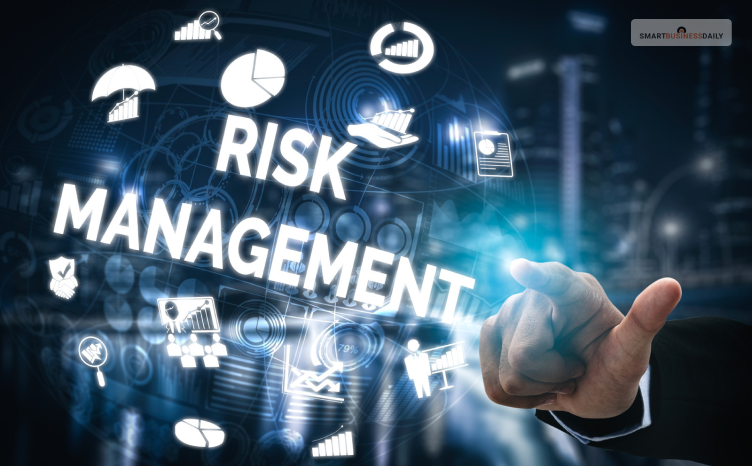Your Guide to the 5 Step Risk Management Process
5 Mins Read
Published on: 18 January 2021
Last Updated on: 13 November 2024

toc impalement
Can a business ever be without risk?
Unfortunately, risks are present in all businesses, large and small. However, savvy business owners know that they can use risk management to reduce the chance of risks damaging or bankrupting a company.
What is risk management? Simply, it’s a process of assessing and managing risks, with the aim of protecting a project or business.
To be successful at managing risk, you need to understand the process. To learn more, keep reading to understand the 5 step risk management process.
1. Identify Risks
Identifying potential risks is the first step in risk management. Consider all the aspects of your business and give thought to what could go wrong.
Risks can be financial, operational, and strategic. All have the potential to damage or ruin your business, so take even small risks seriously.
Sit down and brainstorm every possible risk that could impact your company—just get all your ideas on paper, as you’ll refine and rank them later on.
2. Analyze the Severity of the Risk
The next step is risk analysis. Your company needs to determine both the severity and likelihood of a particular risk occurring.
Risk mapping is a good way to work this out, as maps can help you visually determine which risks are the lowest.
3. Evaluate the Risk
Next, you’ll want to evaluate each risk. Is the risk worth taking?
Think about whether or not you want to accept the risk or avoid it altogether. If you are going to take a risk, you’ll want to mitigate it as much as possible.
4. Treat the Risk
For each issue, you’ll likely have several directions that you can take. Decide which option is the least likely to cause danger and risk to the company.
Once a decision has been made, communicate this to the rest of the company. Ideally, there should be formal documentation and training so that the rest of the staff members know what they can do to help reduce the chance of a risk happening.
5. Review and Monitor
Once a decision has been made to take a risk, that doesn’t mean you can forget about it! Risks need to be continuously monitored over time.
Keep an eye on the risk, seeing if it’s changing at all over time. If a risk seems like it’s becoming more and more likely to occur, you may want to change the strategy for your business to help it stay safe.
Benefits Of Having A Risk Management Strategy

We have already discussed five leading proponents of an effective Plan B or a Risk Management Strategy. However, we have yet to discuss the importance of having a Risk management strategy.
This section will list some of the critical benefits of having a clear-cut Risk Management Strategy. However, it would help if you remembered that the benefits listed below are subjective.
With that sensibility, here are some of the most essential critical benefits of having a Risk Management Strategy.
Operational Continuity
Operational continuity is one of the most seminal points of having a Risk Management strategy. Operational risks can rise at any point in time. In fact, it is unavoidable to a great extent.
Therefore, having a clear plan of action during such times can help you deal with the problem. In other words, a robust crisis management plan can reduce the damage and keep the ball rolling.
Therefore, operational continuity is one of the most significant benefits of a risk management plan .
Protection Of Assets
At a time of crisis, safeguarding business assets becomes very important. These assets could be intellectual or tangible. In fact, in today’s data-driven society, intellectual properties are more important than tangible assets.
A clear risk management strategy can help you protect these assets by funneling them elsewhere. Some companies use this technique to safeguard their data. A recent study shows that after 2020, this form of data safeguarding is becoming more and more common.
Customer Loyalty & Satisfaction
A brand is not just about the products it sells. A brand is a sense of trust and reputation. In that way, your logo, market reputation, digital presence, etc., are part of your legacy and must be protected at all costs.
A well-thought-out business plan and a risk management strategy can help you insure or safeguard these brand markers. This would give you a sense of security to the whole deal.
In a crisis, a risk management plan can help you safeguard your brand image and name. One glaring example is the bankruptcy and re-emergence of Nokia as a brand.
Assessing & Achieving Goals
A significant part of running a company is to achieve specific goals. These goals could be short-term or long-term in nature. However, in times of crisis, these goals are treated as secondary, and the bulk of the workforce gets into containing and managing the risk.
However, a proper risk management strategy can help you break up the workforce and prevent the goals becoming secondary. This point could be seen as an extension of the previous point. However, risk management strategies help safeguard goals.
Increased Profitability
Profitability is the ultimate motivator for entrepreneurs. Regardless of the scale of the business, every entrepreneur wants to remain profitable. However, this can be jeopardized at the time of crisis.
A proper risk management plan can help keep your business afloat during a crisis. Therefore, the final benefit of a risk management strategy is that it keeps the business profitable.
Understand the 5 Step Risk Management Process to Keep Your Company Safe
Many companies use the 5 step risk management process to protect their business. Know that you know more about risk management, set up a plan for your business, covering when, how, and why you’ll monitor risks.
It can also be helpful to take a risk management course or use risk management software, giving your business a competitive advantage.
Get started today and keep your business profitable, safe, and successful.
Was this article helpful? If so, please read on to learn more.
Read Also:


















Comments Are Closed For This Article